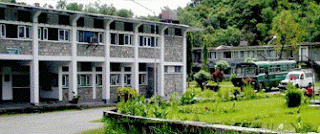Forests come in all shapes and sizes. The many different types of forest are generally classified according to location and climate. Some of the types of forest are described below:
Tropical rainforests
Year-round high temperatures and abundant rainfall makes this a dense, lush forest. Tropical rain forests are found near the equator. They are vital storehouses of biodiversity on the planet, and yet face severe threat today, with much of their original extent depleted.
Sub-tropical forests
These are found to the sound and north of the tropical forests. The trees here are adapted to resist the summer drought.
Mediterranean forests
These forests are found to the south of the temperate regions around the coasts of the Mediterranean, California, Chile and Western Australia. The growing season is short and almost all trees are evergreen, but mixed hardwood and softwood.
Temperate forests
Found in such places as eastern North America, northeastern Asia, and western and eastern Europe, temperate forests are a mix of deciduous and coniferous evergreen trees. Usually, the broad-leaved hardwood trees shed leaves annually. There are well-defined seasons with a distinct winter and sufficient rainfall.
Coniferous forests
Coniferous forests inhabit the cold, windy regions around the poles. There are both hardwoods and conifers found in this region. The conifers are evergreen and structurally adapted to withstand the long drought-like conditions of the long winters, whereas the hardwoods are deciduous.
Montane forests
These are also known as cloud forests because they receive most of their precipitation from the mist or fog that comes up from the lowlands. Some of these montane woodlands and grasslands are found in high-elevation tropical, subtropical and temperate zones.
Plants and animals in these forests are adapted to withstanding the cold, wet conditions and intense sunlight. Trees are mainly conifers.
Plantation forests
There are around 140 million hectares of “plantation forests” in the world, accounting for around 7% of global forest cover. The productivity of planted forests, in terms of supplying a sustainable volume of timber and fibre, is usually greater than natural forests. Plantations produce around 40% of industrial wood.
NORTHERN CORDILLERA FORESTS
The Northern Cordillera Forests of Canada are a good example of boreal or taiga forests.
These forests thrive in low annual temperatures and precipitation of 40-100cm per year, which mainly falls as snow. The nutrient poor soils favour conifer species, although some species of deciduous trees also feature.
Set amongst the Rocky Mountains, the Hyland Highland, the Boreal Mountains, the Yukon-Stikine Highlands, and the Pelly and northern Cassiar Mountains the plants growing within this ecoregion differ according to elevation. At the highest alpine regions grow dwarf rhododendrons and laurels, dwarf birches, willows, and lichens. The middle, or subalpine, areas contain forests of fir, black spruce, and white spruce. The warmer low elevation boreal forests are composed of lodgepole pine, white and black spruce, paper birch, and aspen.
Lodgepole pine and aspen depend on the natural fires of the ecoregion to regenerate their forests.
The Northern Cordillera has been called the Serengeti of the North due to the wide variety of species found here. Moose, caribou, mountain goats, bison, Stone's and Dall's sheep, black bears, grizzly bears, weasels, red foxes, beavers, arctic ground squirrels, snowshoe hares, pikas, muskrats, wolves, and wolverines call it home. Overhead and on the ground, you might also find several species of birds, including ptarmigan, spruce grouse, snowy owls, waterfowl, cranes, and ruffed grouse. At the end of summer, herds of caribou undertake a spectacular migration as they head south to escape the harsh winter.
These forests thrive in low annual temperatures and precipitation of 40-100cm per year, which mainly falls as snow. The nutrient poor soils favour conifer species, although some species of deciduous trees also feature.
Set amongst the Rocky Mountains, the Hyland Highland, the Boreal Mountains, the Yukon-Stikine Highlands, and the Pelly and northern Cassiar Mountains the plants growing within this ecoregion differ according to elevation. At the highest alpine regions grow dwarf rhododendrons and laurels, dwarf birches, willows, and lichens. The middle, or subalpine, areas contain forests of fir, black spruce, and white spruce. The warmer low elevation boreal forests are composed of lodgepole pine, white and black spruce, paper birch, and aspen.
Lodgepole pine and aspen depend on the natural fires of the ecoregion to regenerate their forests.
The Northern Cordillera has been called the Serengeti of the North due to the wide variety of species found here. Moose, caribou, mountain goats, bison, Stone's and Dall's sheep, black bears, grizzly bears, weasels, red foxes, beavers, arctic ground squirrels, snowshoe hares, pikas, muskrats, wolves, and wolverines call it home. Overhead and on the ground, you might also find several species of birds, including ptarmigan, spruce grouse, snowy owls, waterfowl, cranes, and ruffed grouse. At the end of summer, herds of caribou undertake a spectacular migration as they head south to escape the harsh winter.
Both the plantation area and contribution to world wood production are projected to continue to increase in the foreseeable future.
Source : WWF


